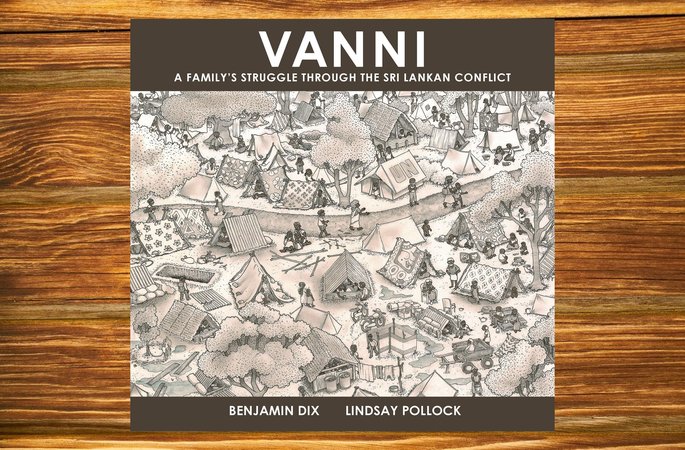Vanni: A Family’s Struggle Through the Sri Lankan Conflict – A Novel by Benjamin Dix and Lindsay Pollock
“The full story of the 2009 war in Sri Lanka has largely been ignored by the global press and international society. This graphic novel is telling the story to a new audience and simultaneously telling it in new ways to the few that already knew it. This Vanni story needs to be heard in order to avoid it happening again.” — Liv Tørres, General Secretary, Nobel Peace Centre
Will Eisner’s A Contract with God and Art Spiegelman’s Pulitzer Prize-winning Maus – are considered to be pioneer graphic novels. Today the genre of graphic novel is a popular read across the reading world. Because they can be read and comprehend easily in a world that is increasingly digitised.
Persepolis is another poignant graphic autobiography by Marjane Satrapi. The book portrays her growing up in Iran during and after the Islamic Revolution.
Palestine is a non-fiction graphic novel written and drawn by Joe Sacco about his experiences in the West Bank and Gaza during early ’90s. Sacco’s text illustrates the plight of the Palestinian people in the backdrop of their history.
The Breadwinner, also known as Parvana, is a graphic novel by Deborah Ellis. Parvana is an 11-year-old girl who is forced to be the breadwinner for her family in a war-torn Taliban-era in Afghanistan.
Benjamin Dix, who is the author of Vanni, has worked as a Communications Manager for the United Nations and various international NGOs across Asia and Africa for over 12 years. Ben was based in LTTE controlled Vanni, North Sri Lanka with the UN from 2004 – 2008.
This has led him to produce this amazing piece of work- a graphic novel, VANNI: A family’s struggle through the Sri Lankan conflict, which covers the heartbreaking human narratives of the tsunami and the stories of people caught amidst the final war between the Srilankan government and the LTTE.
Dix began the work as his PhD project, partly funded by the Arts Council of England. He initially believed that he could finish the book within six months, but it stretched out to a long narrative and consumed seven years.
Ben earned his Doctorate in Anthropology: Graphic Violence: Representing Conflict and Migration through Narratives and Illustrations (University of Sussex, 2016) His unconventional PhD dissertation dealt with “how to take traumatic testimony and turn it into sequential art”.
It tells the story of a fictitious family, the Ramachandrans, and their neighbours the Chologars. They live in Chempiyanpattu, a small village on the northern Sri Lankan coast in the Tamil Tiger controlled area known as Vanni. First, their homes are swept away by the tsunami, and then their lives are threatened by the growing Sri Lankan assaults on the rebel Liberation Tigers of Tamil Eelam (LTTE).
“The story of the 2009 war in Sri Lanka in which tens of thousands of Tamil civilians were brazenly and brutally killed, is rapidly being buried by powerful countries with strategic and business interests in the region. This book seeks to unbury those terrible, sordid secrets and place them in clear view for the world to see.”
—Arundhati Roy
Together there are twelve adults and children in the two families, but by the end, many have been lost or killed, reflecting the plight of 300,000 refugees, some 70,000 who died (according to the UN), and 140,000 who went missing (testified by the Catholic Bishop of Mannar).
Dix calls the book ‘Non-fiction fiction’ because it recounts real-life experiences fictionalised into the stories.
Lindsay Pollock, who has illustrated Vanni graphic novel, is a cartoonist, illustrator and a film-maker based in London.
Dix and Pollock had travelled through Tamil Nadu, India, to study Tamil features and life, and meeting families. Pollock has sketched everything vividly in monochrome in his incredibly detailed pictures.
Told from the perspective of two families, Vanni, takes readers through the unimaginable struggles, distresses, and life-changing decisions people are compelled to make when caught up in someone else’s war.
Vanni draws on years of meticulous research, in-depth interviews with refugees and analysis of official reports.
It depicts valiant actions of empathy and appalling acts of violence as well as remembering the experiences of civilians caught in modern warfare and forced migration.
Storytelling is one of the world’s most powerful tools, and Dix uses it very creatively and intelligently. Linsay Pollack’s precise artwork brings the story into life in a poignant way.



